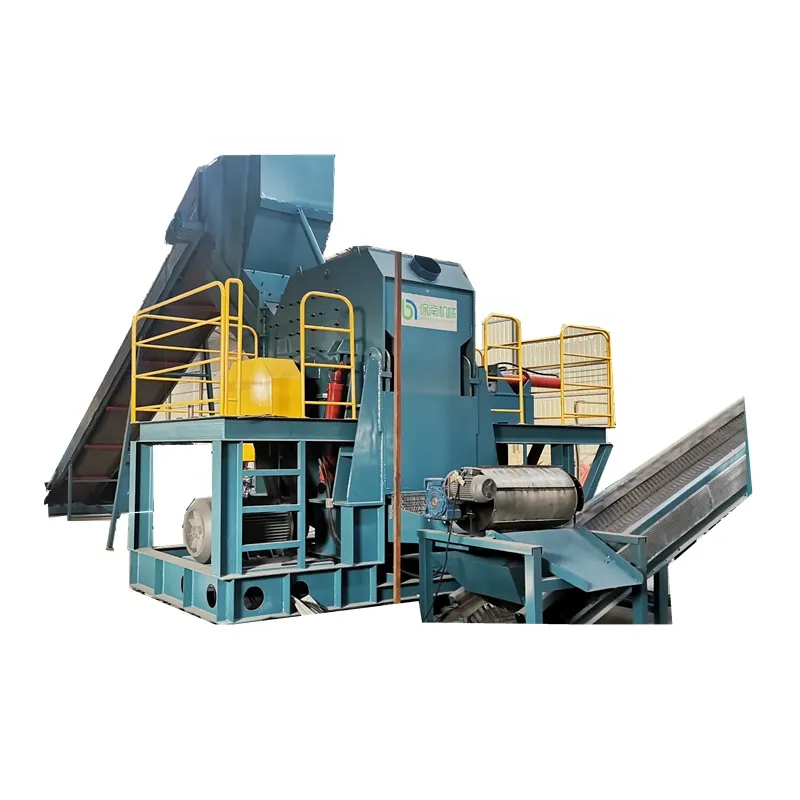
10 月 . 06, 2024 18:56 Back to list
The Evolution and Impact of Waste Sorting Machines
In an age where sustainability is at the forefront of global discussions, the innovation of waste sorting machines plays a critical role in enhancing recycling efforts and reducing landfill waste. As urbanization and industrialization continue to rise, the generation of waste has escalated tremendously. To mitigate this issue, waste sorting machines have emerged as essential tools designed to streamline the separation of recyclables from general waste, transforming how municipalities and businesses manage their refuse.
Waste sorting machines utilize advanced technologies, including conveyor belts, sensors, and artificial intelligence, to automate the sorting process. Traditional waste management methods often involve manual labor, which can be inefficient and hazardous. By implementing these machines, the accuracy and speed of waste sorting are significantly improved. These machines can identify different materials such as plastics, metals, paper, and organic waste, automatically directing them to their respective disposal areas. This not only reduces the labor costs associated with manual sorting but also minimizes the risk of human error.
One of the most notable advancements in waste sorting technology is the integration of machine learning algorithms. These systems continuously improve their sorting capabilities based on previous sorting data. This adaptive learning process enables the machines to become increasingly efficient over time, adapting to changes in waste composition and enhancing recycling rates. As a result, municipalities can achieve higher diversion rates, ensuring that more materials are reused and less are sent to landfills.
The environmental benefits of waste sorting machines are profound. Effective waste separation facilitates the recycling process, conserving natural resources and reducing the energy required for the production of new materials. For instance, recycling aluminum saves up to 95% of the energy needed to produce the metal from bauxite ore. Moreover, reducing the volume of waste directed to landfills lessens greenhouse gas emissions, particularly methane, which is produced when organic waste decomposes anaerobically.

Economic implications also accompany the adoption of waste sorting machines
. With the rising cost of landfill operations and the increasing demand for recycled materials, businesses and local governments are realizing the financial benefits of investing in automated sorting technologies. By generating high-quality recycled materials, municipalities can provide raw inputs to manufacturers, creating a circular economy where waste becomes a resource.Furthermore, the implementation of waste sorting machines aligns with global sustainability goals. As cities and countries pledge to reduce their carbon footprints and promote sustainable practices, effective waste management becomes essential. The United Nations Sustainable Development Goals (SDGs), particularly Goal 12 (Responsible Consumption and Production), emphasize the need for responsible waste management and practices that promote recycling.
Despite their advantages, challenges remain in the widespread adoption of waste sorting machines. Initial setup costs can be prohibitive for smaller municipalities or businesses, requiring significant investment in infrastructure and training. Additionally, public awareness and participation are crucial; citizens must be educated on proper waste disposal practices to maximize the machines' effectiveness. Community engagement initiatives can promote a culture of recycling and responsible waste management, fostering a sense of collective responsibility.
In conclusion, waste sorting machines represent a significant advancement in waste management technology, offering a solution to the growing challenges of waste generation and disposal. Their capacity to efficiently separate materials enhances recycling efforts, reduces environmental impact, and supports economic growth through the creation of a circular economy. As communities worldwide continue to grapple with waste-related issues, investing in and adopting waste sorting machines will be essential for a sustainable future. Embracing these innovations is not just about improving waste management; it is a step toward a cleaner, greener planet for generations to come.
Latest news
Unveiling the Power of Eddy Current Separator
NewsSep.25,2024
Transform Your Home Recyclin:home metal shredder
NewsSep.25,2024
The Future of Waste Management with Recycling Line Picker
NewsSep.25,2024
The Benefits of a Metal Recycling Plant
NewsSep.25,2024
Revolutionize Material Separation with Onwang Technology
NewsSep.25,2024
Innovative Waste Management: Unveiling the MSW Sorting Plant
NewsSep.25,2024